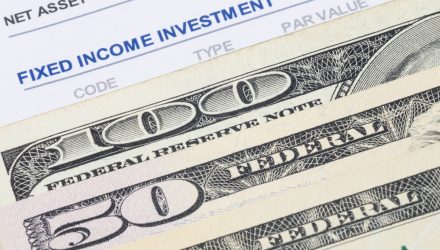As we consider the current fixed-income environment, investors can consider targeted bond exchange traded fund strategies to diversify a portfolio.
On the recent webcast, Fixed Income Strategies for Volatile Markets, Steve Sachs, Head of Capital Markets, ETFs, Goldman Sachs Asset Management; Jason Singer, Senior Portfolio Manager, Global Fixed Income, Goldman Sachs Asset Management; and Michael Swell, Co-Head of Global Portfolio Management, Global Fixed Income, Goldman Sachs Asset Management, helped fixed-income investors consider the necessary tools to adapt to the changing market conditions.
Fixed-income investors are now faced with a dramatically low-rate environment after the Federal Reserve enacted aggressive loose monetary policies in a bid to prop up an economy that has been dragged down by the coronavirus or COVID-19 pandemic.
Meanwhile, the shift away from risk assets and rising demand for safe-haven assets have widened corporate spreads, which have revisited 2009 levels, reflecting ongoing concerns over elevated default risks and increased recessionary risk.
In the high-yield market, Goldman Sachs strategists argued that the sell-off in riskier assets reflected the new reality of heightened growth concerns related to COVID-19 and the prospect of low oil prices indefinitely, which may contribute to increased credit risks. However, while they now expect an uptick in defaults, the credit risk may have already been priced in, so it may be time to consider long credit at these broader levels and to capitalize on dislocations.
“We are maintaining market exposure, believing current conditions to be transitory and market discounts, severe,” according to GSAM.
As a way to better access markets, the strategists highlighted the benefits of rules-based, fixed-income investing, which draws on the principles of active management within a passive investment framework. The rules-based or smart beta strategies can improve risk-adjusted returns by incorporating key metrics to use in active management as part of the indexing methodology. Specifically, these factor-based strategies can produce a higher Sharpe ratio or Sortino ratio, lower maximum drawdowns, and lower performance volatility.
“We believe incorporating technical or fundamental screens as part of index construction can improve risk-adjusted returns,” according to GSAM.
For example, fixed-investors can look to the Goldman Sachs Access Investment Grade Corporate Bond ETF (NYSEArca: GIGB) and Goldman Sachs Access High Yield Corporate Bond ETF (GHYB), which incorporate rules-based screens based on fundamental metrics to help determine the health and wealth of issuers, along with screening out the worst performing and more volatile issuers.
Excluded issuers have historically delivered 0.70x less return on average than the underlying FTSE GS Investment Grade Corporate Bond Index. Additionally, these excluded issuers have exhibited 1.21x more volatility than the FTSE GS Index.
A similar return and volatility is shown on the high-yield side where excluded issuers historically delivered -4.21x the return on average compared to the underlying FTSE GS High Yield Bond Index, along with a 1.31x greater volatility than the FTSE GS Index.
Furthermore, investors can consider something like the Goldman Sachs Treasury Access 0-1 Year ETF (NYSEArca: GBIL) as a better cash or money market alternative. The Goldman Sachs Treasury Access 0-1 Year ETF looks to reflect the performance of the Citi US Treasury 0-1 Year Composite Select Index, which is comprised of U.S. Treasury obligations with a maximum remaining maturity of 12 months. An important distinction to note, however, is that GBIL’s income distribution is floored at zero.
Should rates and coupons go to zero, GBIL’s yield and monthly distribution have the potential to go to zero. If the rates dip into the negatives, GBIL’s income distribution will continue to be zero, and the fund’s NAV will continue to reflect the total price return of the underlying securities.
Financial advisors who are interested in learning more about fixed-income strategies can watch the webcast here on demand.








